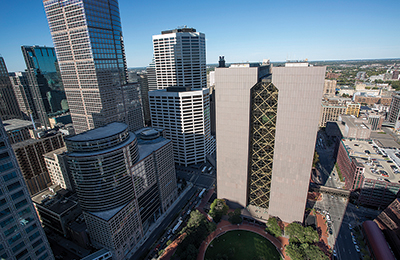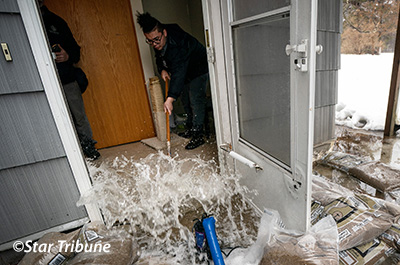How we get started: Foundational strategies guide immediate response to climate change
Hennepin County is tackling the urgency of climate change with an ambitious plan that touches nearly every facet of the work we do. The foundational strategies are how we get started.
These strategies were identified by the county’s climate action teams as the best place to start because they will serve as a strong foundation for the county’s long-term response to climate change.

Strengthen individual and community resilience
We are already experiencing some of the effects of climate change, so we must raise awareness of climate change risks, help people be better prepared, and support collective action. We must engage with communities to develop people-centered solutions that ensures everyone has access to safe and affordable housing, healthcare, food, and transportation.
Transition to renewable energy sources and reduce energy use
The future of energy is clean, locally produced, renewable energy. We must invest in renewable energy through utilities, in communities, and on site and make renewable energy affordable and accessible to everyone. We must also prioritize energy conservation and efficiency.
Cut greenhouse gas emissions from transportation
More than one-third of greenhouse gas emissions in the county come from vehicles, so we must reduce vehicle miles traveled by expanding transit and transit-oriented development, supporting infrastructure for biking and walking, and promoting remote and flexible work. We will also promote electric vehicle infrastructure.
Prevent food waste and divert organic material from the trash
Reducing food waste is one of the most effective climate change strategies. We must support food rescue efforts and help businesses implement best practices to prevent food waste. We also need to expand organics recycling infrastructure to support the increase in organics recycling. And we must close the loop by increasing the use of compost in county projects.
Design infrastructure, buildings, and property to future climate conditions
To ensure we are making good investments, we must design infrastructure based on predictions for future climate conditions and use sustainable building guidelines.
Build and maintain green infrastructure and sequester carbon
Green infrastructure can help manage stormwater, sequester carbon, and provide opportunities for green jobs. Examples of green infrastructure and carbon sequestration includes rain gardens, cisterns, bio-swales, green roofs, tree plantings, and protecting natural areas.
Decrease the heat island effect, especially in areas with highest vulnerability
Hard surfaces and less green space in urban areas produce a heat island effect where those areas get hotter than surrounding areas. To address the heat island effect, we must ensure access to culturally appropriate cooling centers and reduce the impact by installing green infrastructure and preserving mature trees.


